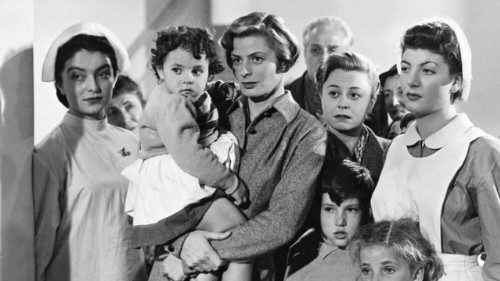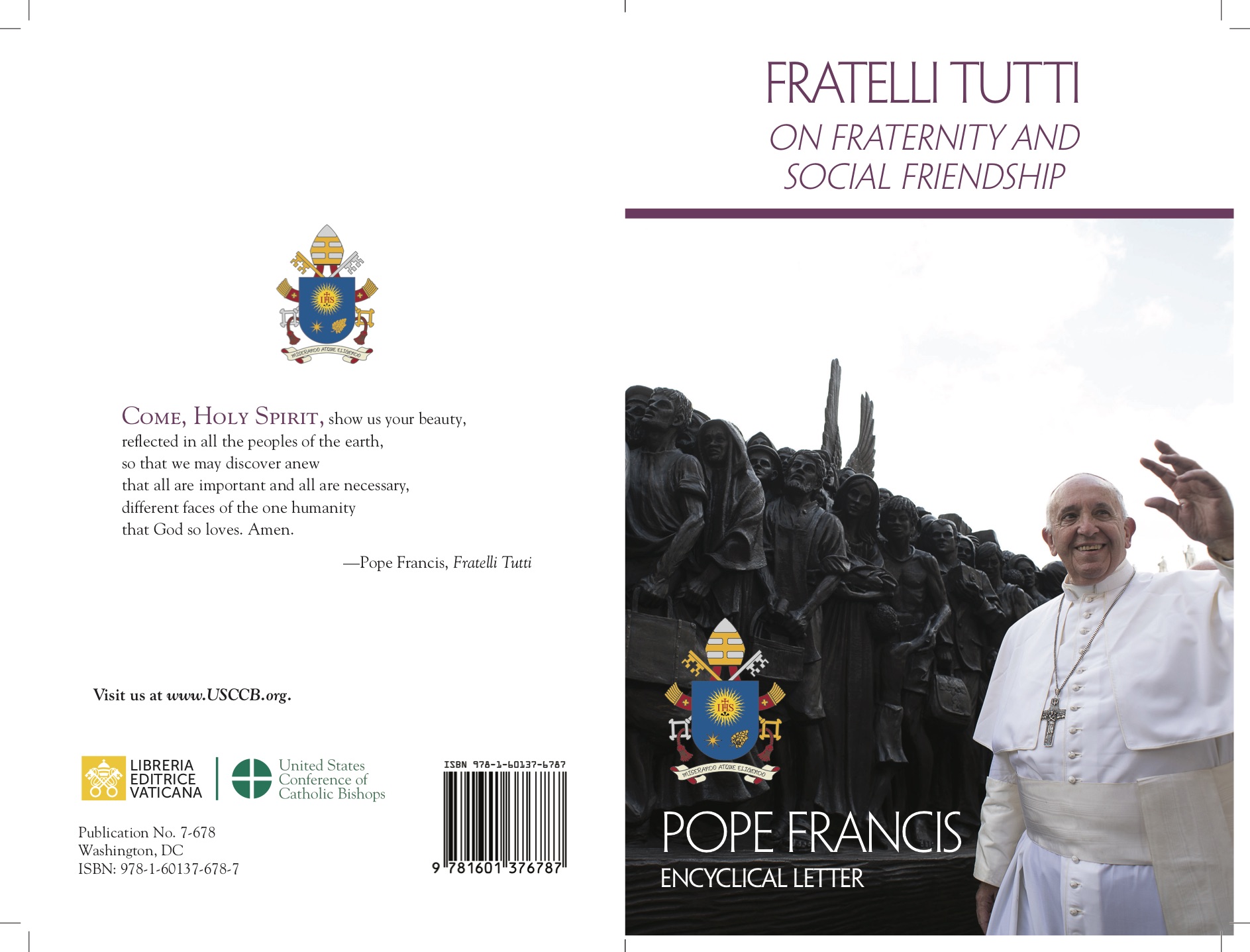
by Tiziana M. Di Blasio*
By its very nature as an art of vision, cinema formally requires a non-verbal language and thematically draws on a dramaturgy that explores the phenomenology of crisis. In auteur cinema, these aspects occur even more so by presenting these crises through original poetics, of exploration and mystery, across a plurality of genres, whether that be drama or comedy, musicals or science fiction, or from biopic to horror. It achieves this through the stature of performers such as Ingrid Bergman, Audrey Hepburn, Jennifer Jones, Sophia Loren, Anna Karina, Silvana Mangano, Vanessa Redgrave, Julie Andrews, Susan Sarandon, and Meryl Streep.
If that way of seeing the crisis has also included the spiritual realm, we owe this to theorists who have examined the presence or absence of God, and to filmmakers who, whether directly, indirectly, or even provocatively, irreverently, if not blasphemously, have elaborated interior journeys that explore the correspondence or discord between faith and heresy, vocation and rebellion, the active life and contemplative life. From the ascetic classicism of Robert Bresson's Les Anges du péché (1943), to the surreal provocation of Luis Buñuel’s Viridiana (1961); from the political-religious conflict in Jacques Rivette’s Suzanne Simonin, la Religieuse de Diderot (1966), to the grotesque pamphlet of Ken Russell’s The Devils (1971); from the Boccaccio-style irreverence of Pasolini’s The Decameron (1971), later reprised by the Taviani brothers in Wondrous Boccaccio (2015), to the evocative feminine perspectives of Márta Mészáros, Margarethe von Trotta, Liliana Cavani, Anne Fontaine, Margaret Betts, and Maura Delpero.
In this wide-ranging case history, a meaningful point of departure for reflection can be found in the portrayal of crisis in Roberto Rossellini’s Europe ’51 (1952), inspired by Simone Weil, Herbert Marcuse, and a true story.
The protagonist, Irene - played by Ingrid Bergman -, is a member of the upper bourgeoisie. Her life is shaken from the emptiness of her existence by the death of her child, who commits suicide due to emotional neglect. Confronted with an irreparable void, she embarks on a journey of asceticism, questioning the ultimate meaning of her pain. In doing so, she commits the “mortal sin” of non-conformity, refusing to adapt to the programmatic insincerity of all-encompassing institutions. Neither her relatives, nor her Marxist cousin, nor the priest, the judge, or the psychiatrist, or representatives of the established order, are able to comprehend Irene’s mourning process, her dystopia, or her radical choices. They are unable to bear the “nakedness” that Weil discusses in her Notebooks. Upon being committed to a psychiatric clinic, she is instead considered a saint by those she had loved in a disinterested and unconventional way.
With astonishing modern relevance, Rossellini anticipates the themes of marginalized communities and the “lowliest among them”, portraying Irene’s care for the outcast and the harsh realities of factory workers. Through a “documentary of the face”, the director tells a sorrowful existential journey that culminates in madness and marginalization, but also in hope and moral strength, in a process of purification through suffering. Rossellini’s message thus reveals that every act of love is an experience of the divine and a search for the Absolute.
The cloister-like imagery, induced by the final scene behind the grate, confirms what Irene had told the judge pressing her about her true intentions: “[....] I want to share in the joy of those who are happy, the pain of those who suffer, the anguish of those in despair. I’d rather lose myself with others than save myself alone. Only someone who is completely free can blend with everyone else, only someone attached to nothing is attached to all human beings”.
In the open-ended final scene, the protagonist looks directly into the camera, and addresses the viewer. From these images, stripped down to only her face, the idea of the transcendent filters through the space left empty by the bodies.
This use of the face, not as a partial object but as an abstraction from any spatial or temporal coordinate, is taken up in Alain Cavalier’s stylized Thérèse (1986), starring Catherine Mouchet. Through his reimagining of the historical figure of Saint Thérèse of Lisieux, the viewer enters the heart of the claustrum, where the essentiality of the face also becomes a hermeneutic key, a face-to-face with Thérèse in a narrative that offers no break between lightness and depth, life and death. The outcome of this approach, which leans heavily on refined iconographic techniques, is not an apologetic/hagiographic portrait, but that of a teenager with a clear and absolute goal, which is to become a saint.
The innovation lies in a stylistic asceticism that mirrors the protagonist's spiritual path. In coherence with this, the claustrum becomes a space-time dimension for reflecting on vocation, where emptiness speaks louder than fullness, rarity more than density, silence more than sound.
The dramaturgy of the enclosed space also captivates a director like Michelangelo Antonioni, who though seemingly far removed from spiritual themes, was profoundly sensitive to existential emptiness and the absence of meaning.
It was the director himself who revealed his fascination after reading the cloistered nun Catherine Thomas’s diary, My Beloved. The Story of a Carmelite Nun. Although confessing his lack of interest in asceticism, yet aware that reason is unable to explain the concept of cloistered life, Antonioni stated, “What answer can these nuns give if they have chosen, as a matter of discipline, not to give any answer? The difficulty in understanding their lives does not depend on the strictness of the Rule nor on how they live it. It depends on us, who do not seek a moment of reflection in the mystery of their experience”. He then quotes Saint Teresa of Ávila: “To suffer or to die. These must be our desires”.
In the late 1970s, upon reading the first three pages of her diary, the director developed the concept for To Suffer or To Die, which led him to visit 14 cloistered convents and to establish written correspondence with several nuns. To one of them, Antonioni posed a bold question: «And what if I were to fall in love with you?» The nun replied strikingly, «It would be like lighting a candle in a room already full of light». The film was never made, but the topic and dialogue were revisited in Beyond the Clouds (1995), distilled into the episode titled This Body of Mud, where a young woman (Irène Jacob) agrees to walk a short way with a stranger (Vincent Pérez) in Aix-en-Provence, the city of a hundred fountains, where the waters of the springs and the rain evoke regeneration. The man, who is intrigued by her mysterious serenity, asks about her life. The camera follows their silent steps from the church to her doorstep. When he asks to see her again, she replies, as quick as lightening, “Tomorrow I enter the convent”.
With the awareness of a reciprocated vocation, Marco Bellocchio’s Blood of My Blood (2015), which is an evolution of his earlier short film The Nun (2010), addresses, albeit tangentially, the opposite theme of forced vocations in the 17th century. Instead, this was linked to the practice of primogeniture, which granted inheritance exclusively to the firstborn male, thereby violating the individual freedom of others, and to the institution of entail. This widespread phenomenon persisted even though the Council of Trent, in the Decretum de Regularibus et Monialibus (1563), anathematized those who violated free will, including through psychological coercion.
The theme has a rich historiography in gender studies, along with cinematic adaptations that have narrated life in the cloister, viewed by some women as a place of self-affirmation, and by others as a place of confinement. These portrayals even gave rise to a subgenre known as nunsploitation, often indulging in morbid depictions of sexuality, torture, and demonic possession.
Of a wholly different tone and depth, Bellocchio’s film, which is set across different time periods, tells the story of a “forced” nun, Benedetta (Lidiya Liberman), who seduces her confessor Fabrizio (Pier Giorgio Bellocchio), which consequently drives him to suicide. His twin brother Federico, a soldier, unsuccessfully tries to persuade her to confess to being a witch. Nonetheless, Benedetta is sealed into a tiny cell with only a slit for air and light.
Shot in Bobbio (province of Piacenza), in a prison space carved out of the abbey of San Colombano, the film, which is structured textually and meta linguistically around interlinked spaces, draws upon various elements to portray a mentality shaped by magical practices and ascetic-discipline.
The film begins with a closed door, which is a figurative element connecting, through concealment and revelation, different epochs as part of the “cosmos of the ajar”. In Gaston Bachelard’s conception, a door both opens and closes onto interior topographies.
The metaphor of the duality -interior/exterior, light/shadow- culminates in the walling-in and unsealing of the cell, which is a powerful image of liberation, and not only material, but symbolic, of a coming back into the light.
We witness Benedetta rising, in the nakedness of an incorrupt body after a harrowing purification or decarnation, like a form of anástasis, a resurrection of the eternal feminine, memory and soul of time.
*Historian, and a former lecturer of “Theory and History of Cinema” at the Pontifical Gregorian University













 Purchase the Encyclical here Fratelli Tutti
Purchase the Encyclical here Fratelli Tutti
